March 31, 2023
Prelims Pointers
March 31, 2023
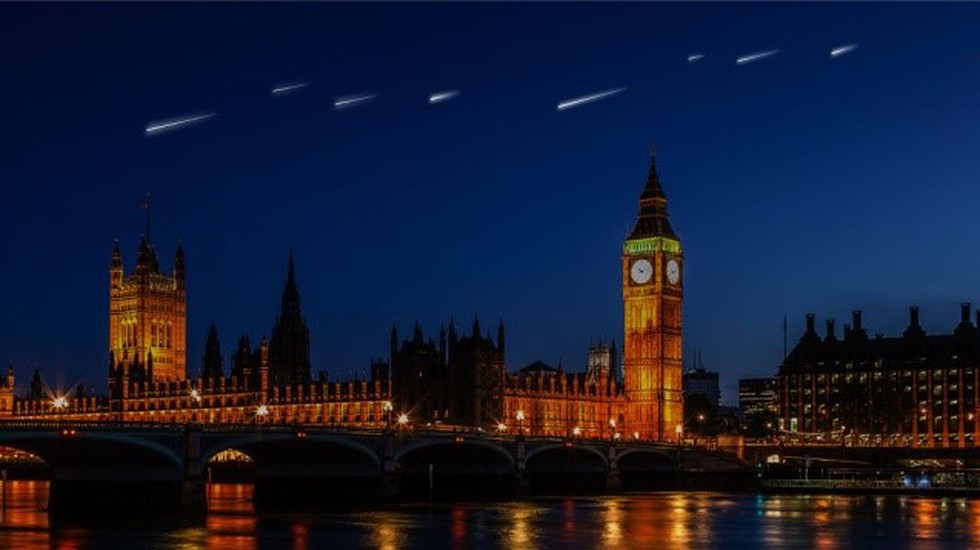
About Sky Canvas Project:
- It is the world’s first artificial meteor shower project.
- The aim of the project will be to collect atmospheric data in the mesosphere.
- Under this project, meteor-replicating particles will be installed in a satellite 250 miles (400 km) up and then released over a designated area.
- These metallic particles will be spheres with a diameter of 0.4 inches (1 cm) and a mass of a few grams.
- The pea-sized balls have a secret chemical formula that causes them to light up from the friction of re-entry at speeds of up to five miles (8km) a second.
- ALE says they will travel more slowly and light up for longer than natural shooting stars - up to ten seconds each.
- They will be visible over a 125-mile (200 km) area.
- The ingredients in the pellets can be altered to change the colour, which means that a multi-coloured flotilla of shooting stars could be created.
What is Mesosphere?
- The mesosphere is a layer of Earth's atmosphere.
- It is directly above the stratosphere and below the thermosphere.
- It extends from about 50 to 85 km (31 to 53 miles) above our planet.
- The transition between the mesosphere and the thermosphere is called
- Temperature decreases with height throughout the mesosphere.
- The coldest temperatures in Earth's atmosphere, about -90° C (-130° F), are found near the top of this layer.
Prelims Pointers
March 31, 2023

About Cellular Senescence:
- It refers to a state of stable cell cycle arrest in which proliferating cells become resistant to growth-promoting stimuli, typically in response to DNA damage.
- During this phase, the cell undergoes numerous phenotypic and metabolic changes.
- Senescent cells accumulate during ageing and have been implicated in promoting a variety of age-related diseases.
- Cellular senescence can compromise tissue repair and regeneration, thereby contributing towards ageing.
- Removal of senescent cells can attenuate age-related tissue dysfunction and extend health span.
- Senescence can also act as a potent anti-tumour mechanism by preventing the proliferation of potentially cancerous cells.
Prelims Pointers
March 31, 2023

About GSAT 7B:
- It is a communication satellite part of the GSAT-7 series.
- GSAT 7 series satellites are advanced communication satellites developed by the Indian Space Research Organisation (ISRO) to meet the communication needs of the defence services.
- The GSAT 7B will primarily fulfil the communication needs of the Indian Army.
- It is a geostationary satellite which will considerably enhance the communication capability of the Indian Army by providing mission-critical beyond-the-line-of-sight communication to troops and formations as well as weapon and airborne platforms.
- It is the first-ever in the five-tonne category that will be designed indigenously by the ISRO.
GSAT 7 Series Satellites:
- GSAT-7 (Rukmini):
- It is India’s first military satellite.
- It was launched in August 2013 from an Ariane 5 ECA rocket from Kourou in French Guiana.
- It is an advanced communication satellite developed by ISRO and primarily provides communication services to the Indian Navy.
- GSAT 7A:
- It primarily provides communication services to the Indian Air Force.
- It also helps in satellite-controlled operations of UAVs.
Prelims Pointers
March 31, 2023
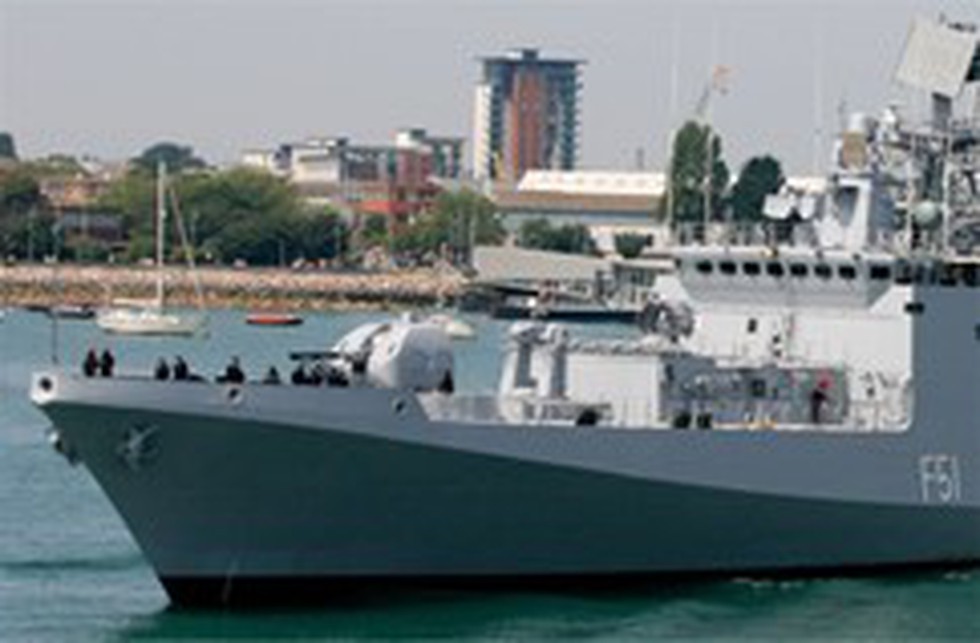
About Lynx-U2 System:
- It is a naval gun fire control system designed and developed indigenously.
- The system will be installed on the NOPV ( Naval Offshore Patrol Vessel), Talwar and Teg class of ships.
- The system has been completely designed and developed by Bharat Electronics Limited (BEL).
- It is capable of accurately tracking and engaging targets amidst sea clutter.
- It is capable of accurately tracking air/surface targets and generating required target data for predicting weapon aiming points and engaging targets.
- The target engagement is carried out with medium/short-range gun mounts like Russian AK 176, AK190, AK630 and the Super Rapid Gun Mount (SRGM) available onboard ships.
Prelims Pointers
March 31, 2023
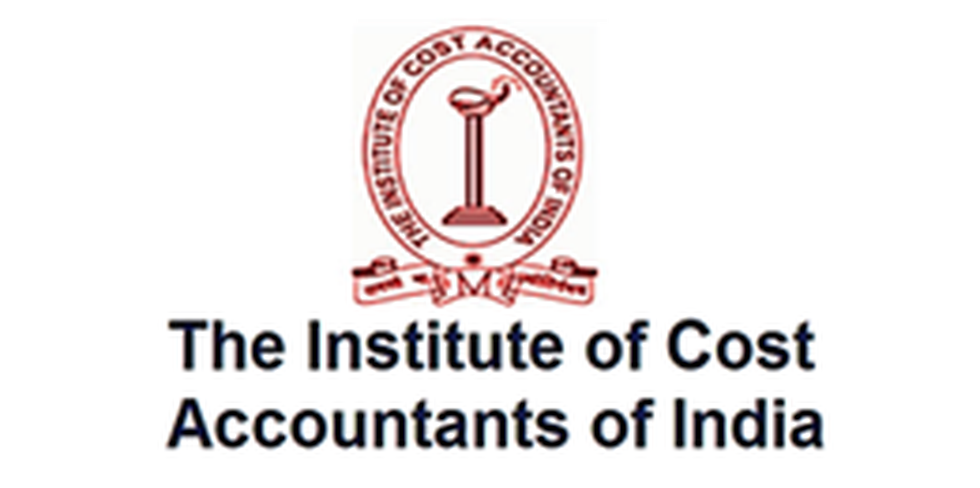
About Institute Of Cost Accountants Of India:
- It is a statutory body established by an act of Parliament, the Cost and Works Accountants Act, 1959.
- Mandate: Regulation of the profession of cost and management accountancy.
- It is the only recognised statutory professional organisation and licensing body in India specialising exclusively in Cost and Management Accountancy.
- It is under the administrative control of the Ministry of Corporate Affairs.
What is Cost Accounting?
- It is the reporting and analysis of a company's cost structure.
- It is a process of assigning costs to cost objects that typically include a company's products, services, and any other activities that involve the company.
- Cost accounting can identify where a company is spending its money, how much it earns, and where money is being lost.
- It aims to report, analyze, and lead to the improvement of internal cost controls and efficiency.
Key facts about the Institute of Chartered Accountants of India (ICAI):
- It is a statutory body established under the Chartered Accountants Act 1949.
- Mandate: Regulating the profession of Chartered Accountancy in the country; Formulation of Accounting Standards; and Prescription of Standard Auditing Procedures.
- It functions under the administrative control of the Ministry of Corporate Affairs, Government of India.
Prelims Pointers
March 31, 2023
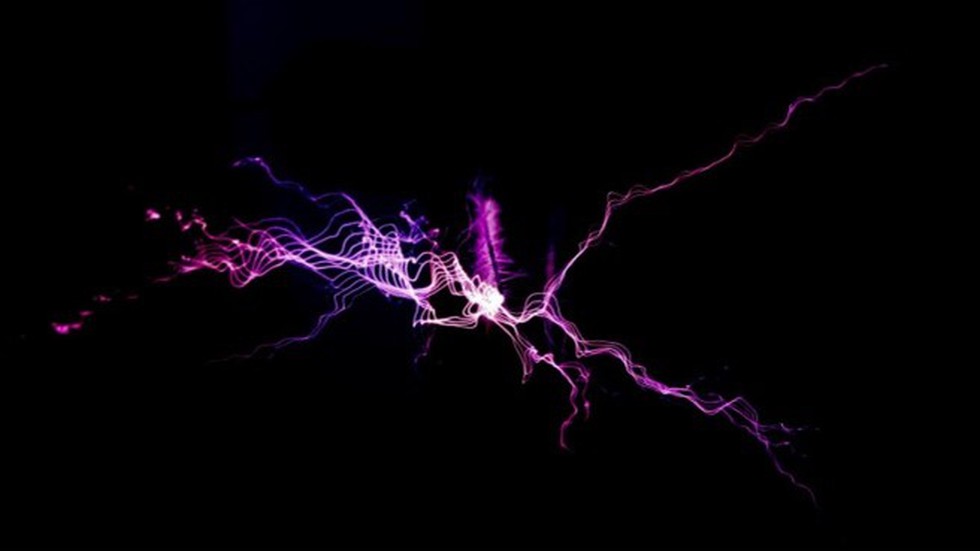
About the Piezoelectric effect?
- It is a phenomenon where specific types of material produce an electric charge proportional to the mechanical stress applied to them.
- It was first time discovered in 1880, in quartz.
- Quartz is the most famous piezoelectric crystal. Quartz is silicon dioxide (SiO2).
- The quartz crystal consists of silicon and oxygen atoms at the four vertices of a three-sided pyramid; each oxygen atom is shared by two pyramids. These pyramids repeat themselves to form the crystal.
- When mechanical stress is applied – i.e., when the crystal is squeezed – the position of the charge is pushed further from the centre, giving rise to a small voltage. This is the source of the effect.
- It is used in this capacity in analog wristwatches and clocks. Such crystals are also used in cigarette lighters, electric guitars, TV remote controls, audio transducers, and other instruments where converting mechanical stress to a current is useful.
- This effect has only been expected in solids thus far because the body being squeezed needs to have an organised structure, like pyramids of quartz.
- Liquids don’t have such a structure. Instead, they take shape of their container.
Prelims Pointers
March 31, 2023
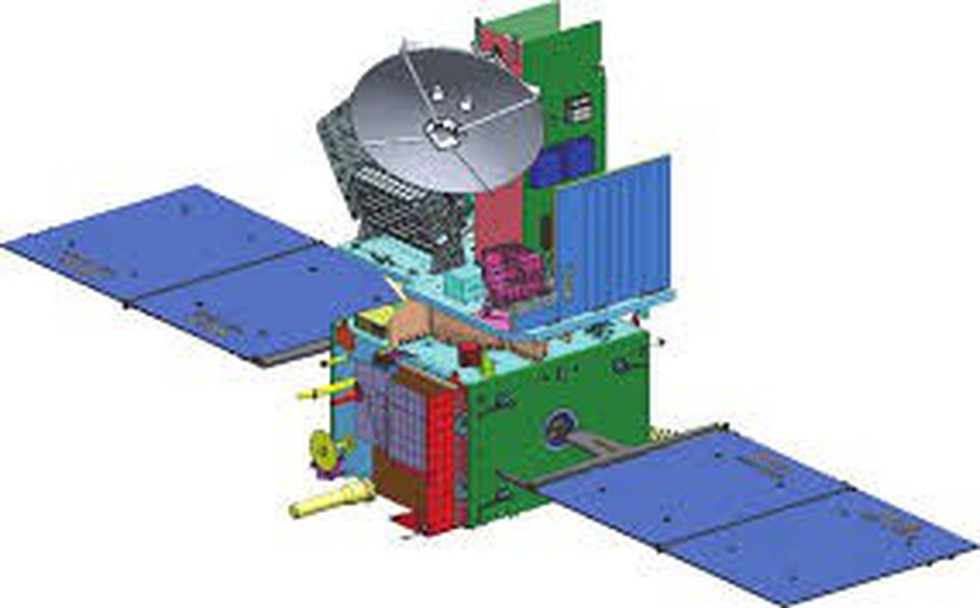
About the EOS-06 satellite:
- Earth Observation satellite (EOS-6) is the third-generation satellite in the Oceansat series.
- This is to provide continuity services for Oceansat-2 spacecraft with enhanced payload specifications as well as application areas.
- Payloads of the satellite are
- Ocean Color Monitor (OCM-3)
- Sea Surface Temperature Monitor (SSTM)
- Ku-Band Scatterometer (SCAT-3)
- ARGOS
What are the objectives of the Mission?
- To ensure the data continuity of Ocean colour and wind vector data to sustain the operational applications.
- To improve the applications, some additional datasets such as Sea Surface Temperature and more number of bands in the Optical region for fluorescence and in the Infrared region for atmospheric corrections are accommodated.
- To develop/improve related algorithms and data products to serve in well-established application areas and to enhance the mission utility.
- The EOS-06 is envisaged to observe ocean color data, sea surface temperature and wind vector data to use in Oceanography, climatic and meteorological applications.
- The satellite also supports value added products such as potential fishing zone using chlorophyll, SST and wind speed and land based geophysical parameters.
Prelims Pointers
March 31, 2023
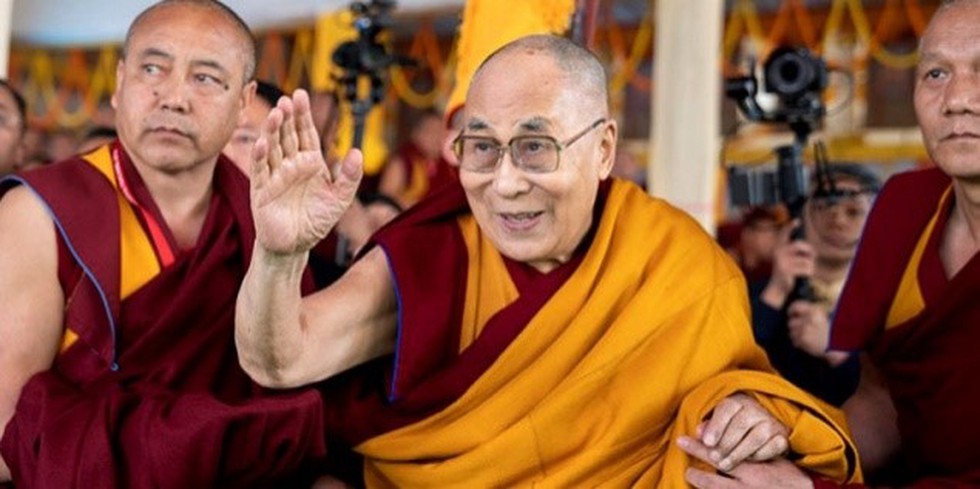
About Tibetan Buddhism:
- Buddhism originated in India and became the predominant religion in Tibet by the 9th century AD.
- It evolved from the Mahayana and Vajrayana traditions of Buddhism, incorporating many tantric and shamanic practices of both post-Gupta period Buddhism in India.
- Tibetan Buddhism also incorporates the Bon religion which was spread across Tibet before Buddhism’s arrival.
- Tibetan Buddhism has 4 major schools: Nyingma (8th century), Kagyu (11th century), Sakya (1073) and Gelug (1409)
- The Janang school (12th century) is one of the smaller schools that grew as an offshoot of the Sakya school.
What is Gelug School?
- Since 1640, the Gelug School has been the predominant school of Tibetan Buddhism.
- The Dalai Lama belongs to Gelug School (‘Dalai’ means ‘ocean’ in Mongol).
- The Dalai Lama is the foremost spiritual and temporal authority of Tibet.
- The 5th grand lama of the school, Ngawang Lobsang Gyatso, was first conferred the title of Dalai Lama.
- To consolidate his rule, he instituted the tradition of succession through reincarnation in the Gelug School.
- He claimed to be the reincarnation of Avalokiteshvara, one of the most important Bodhisattvas in Mahayana traditions.
Prelims Pointers
March 31, 2023
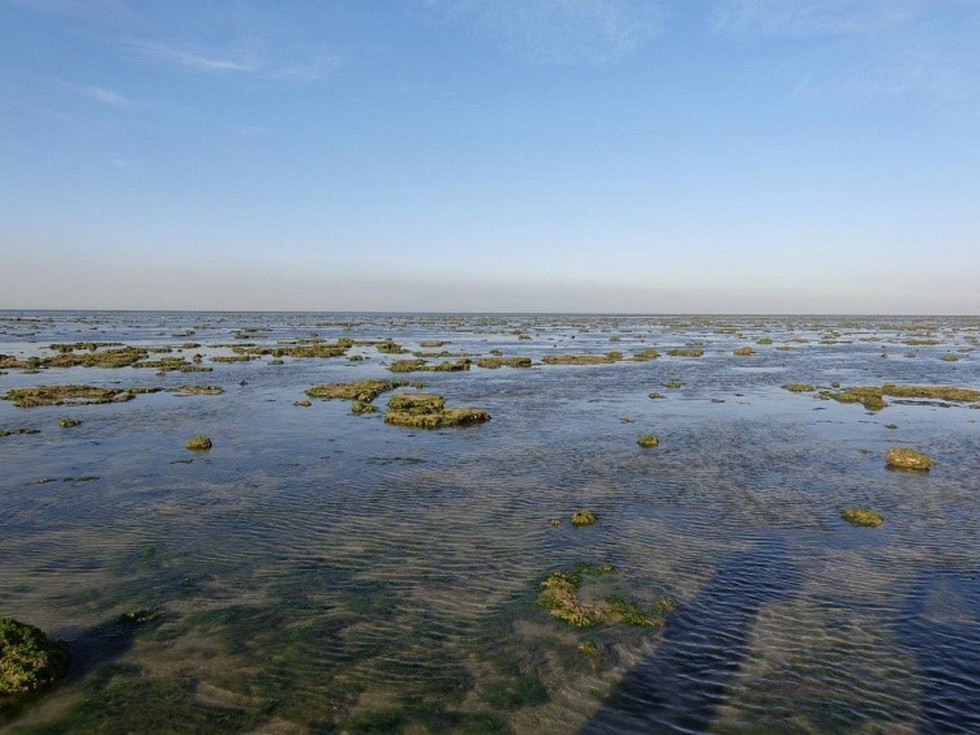
About Gulf of Kutch National Park:
- It is India’s first Marine Wildlife Sanctuary and first Marine National Park which were created in the Gulf of Kutch in 1980 and 1982, respectively.
- It is an archipelago of 42 tropical islands along the northern coast of Jamnagar district and the southern coast of Kutch.
- Some of the finest coral reef fringe islands are found at Pirotan, Narala, Ajad and Positara, with species of hard and soft coral.
- Fauna: There are 7 species of mangrove which are breeding grounds for colonies of near-threatened species of birds such as the Painted Stork, Darter and Black-necked Ibis. Endangered Sea Turtles like the Green Sea, Oliver Riddley & Leather Back can also be found here.
Prelims Pointers
March 31, 2023
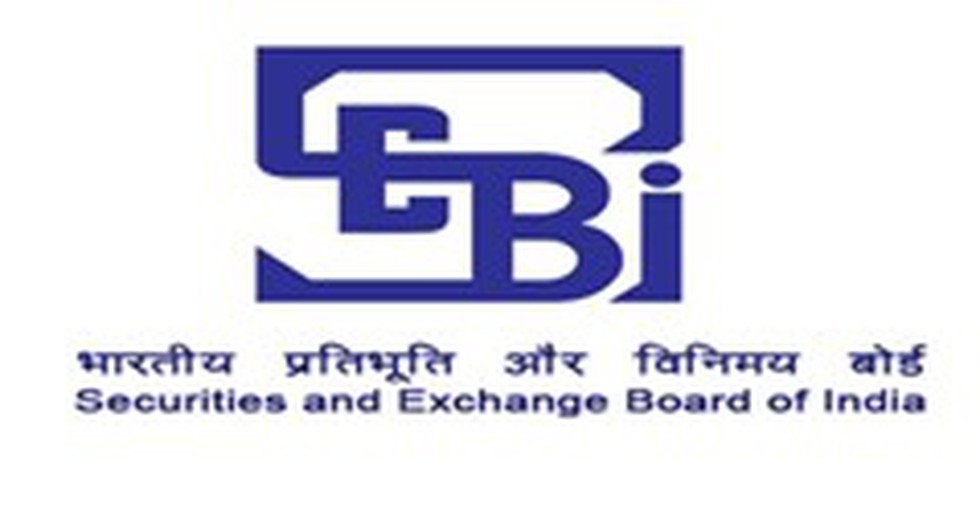
About Corporate Debt Market Development Fund:
- The ‘Corporate Debt Market Development Fund (CDMDF) is a backstop facility for specified debt funds during market dislocations.
- The fund is intended to provide liquidity support in the event of a financial crisis.
- It aims to instil confidence amongst the participants in the corporate bond market and to generally enhance secondary market liquidity.
- The proposed CDMDF will have an initial corpus of Rs 3,000 crore contributed by mutual funds.
- The government has approved a 10-time leverage of the fund (Additional corpus), thus CDMDF may raise funds up to Rs 30,000 crore.
- Contributions to the fund can be done by the specified debt-oriented mutual fund schemes and asset management companies of mutual funds.
- This fund is guaranteed by the National Credit Guarantee Trust Company (NCGTC) and the backstop facility will be managed by SBI Mutual Fund.
- Specified mutual fund schemes will have access to the fund for selling securities during market dislocation.
- This access is proportional to the contribution made to the fund at a mutual fund level.
What is a Backstop facility?
- A backstop is an act of providing last-resort support or security in a securities offering for the unsubscribed portion of shares.
- When a company is trying to raise capital through an issuance, it may get a backstop from an underwriter or a major shareholder, such as an investment bank, to buy any of its unsubscribed shares.
March 30, 2023
Prelims Pointers
March 30, 2023
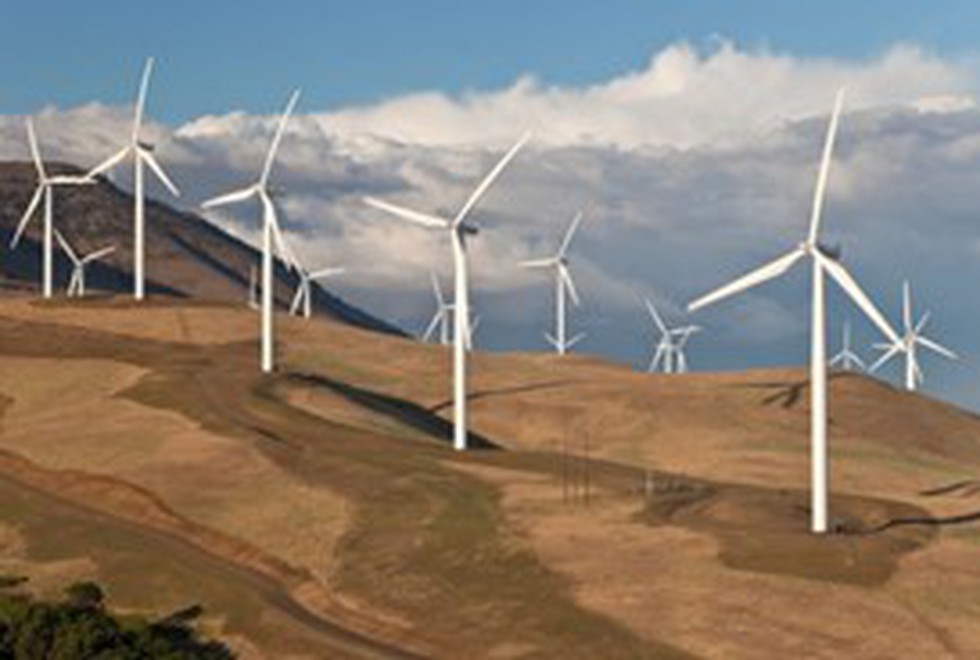
About Global Wind Energy Council (GWEC):
- It is a member-based trade association that represents the entire wind energy sector.
- It was established in 2005 to provide a credible and representative forum for the entire wind energy sector at an international level.
- The members of GWEC represent over 1,500 companies, organisations and institutions in more than 80 countries, including manufacturers, developers, component suppliers, research institutes, national wind and renewables associations, electricity providers, and finance and insurance companies.
- Headquarters: Brussels, Belgium.
- Mission: To promote the development and deployment of wind power as a sustainable and cost-effective source of energy.
- The GWEC conducts research, provides market intelligence, and advocates for policies that support the growth of wind energy.
- It also organizes events and conferences to bring together stakeholders from around the world to discuss key issues in the industry.
- Reports published: Global Wind Report
Prelims Pointers
March 30, 2023
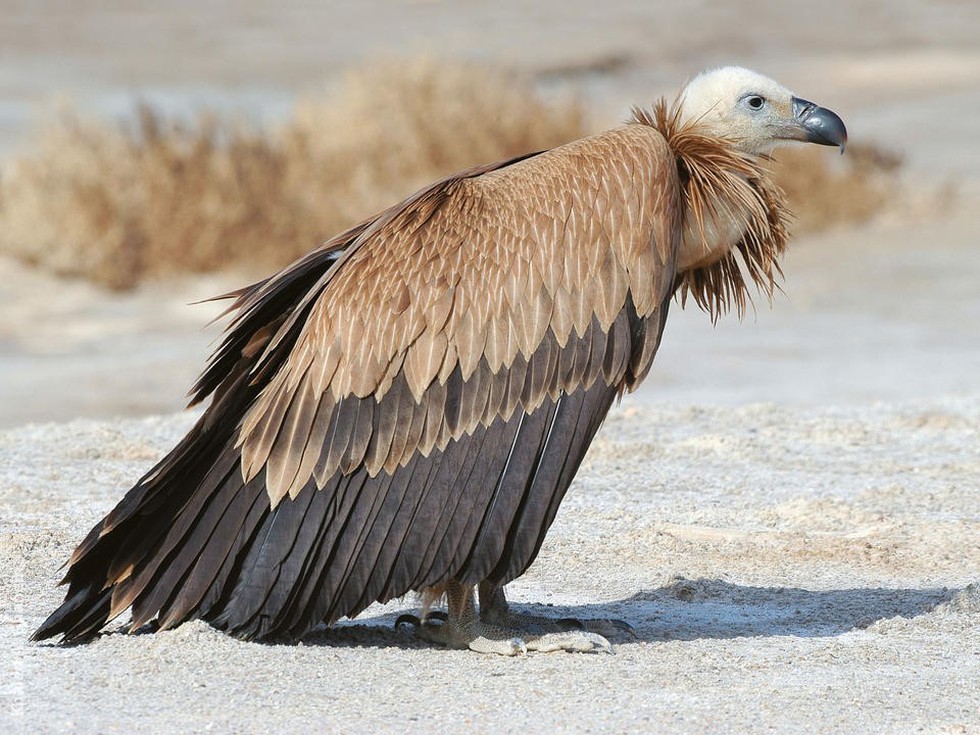
About Eurasian Griffon Vulture:
- It is a large Old World vulture in the bird of prey family Accipitridae.
- It is one of the largest birds in the vulture family and is Europe’s second-largest bird.
- Scientific Name: Gyps fulvus
- Distribution:
- It has a very large range, across the Middle East, North Africa, and Europe, from India to Portugal and Spain
- They are most commonly found in countries that border the Mediterranean.
- Habitat:
- They live in areas of mountains, plateaus, shrubland, grassland, and semi-desert, usually in warm climates, but also in harsher conditions of cold, rain, mist, and snow to secure particularly favourable breeding or foraging conditions.
- They tend to avoid forests, lakes, wetlands, and marine waters.
- Features:
- The griffon vulture is 93–122 cm long with a 2.3–2.8 m wingspan.
- Adult birds are identical with a white head, neck and ‘feathery’ ruff-like collar.
- Its body and upper wings are pale brown.
- They are social birds, often gathering in large groups to feed on a single carcass.
- Conservation Status:
- IUCN: Least Concern
Prelims Pointers
March 30, 2023
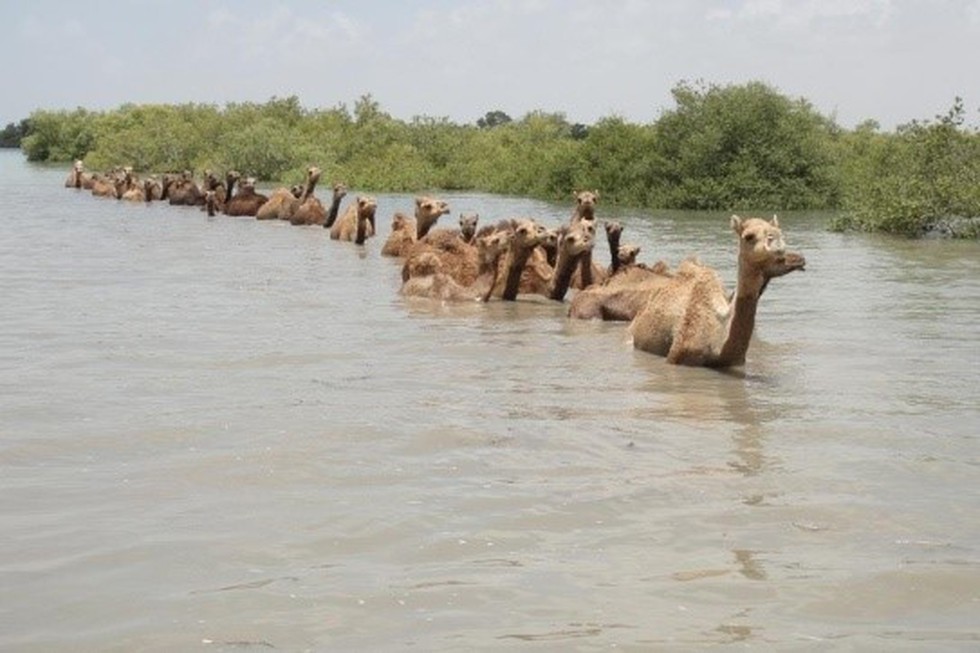
About Kharai Camel:
- They are a rare breed of camel found in the salt marshes of the Kutch district of Gujarat.
- Their name is derived from the local word khara, meaning saline.
- It is well adapted to the saline desert environment and is known for its ability to swim (hence also known as ‘swimming camel’).
- They swim long distances in the sea to reach their grazing areas, usually more than 3 km at a time, even in deep waters.
- Kharai camels mostly feed on mangroves.
- They are considered a unique Eco-tonal species as they survive in the dryland ecosystem as well as the coastal ecosystem.
- Conservation Status:
- IUCN: Endangered
Prelims Pointers
March 30, 2023
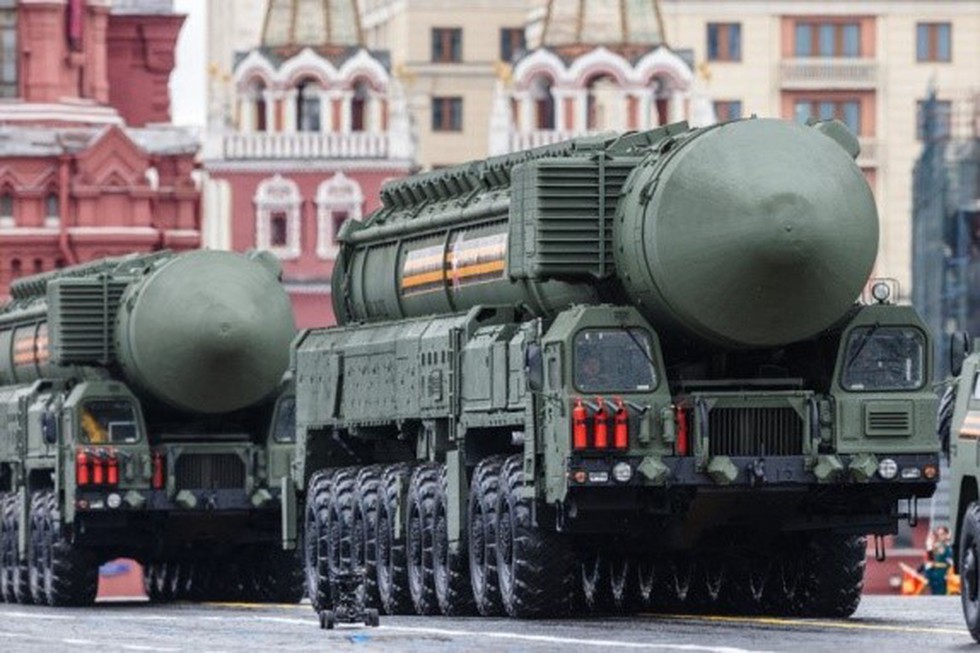
About Yars intercontinental ballistic missile:
- The Yars (also known as RS-24 or SS-29) is a Russian intercontinental ballistic missile (ICBM).
- Features:
- It is a three-stage solid-fuel missile and can be launched from a silo or mobile launcher.
- The missile weighs around 49,000 kg and is 9 metres long.
- It has a range of 12 000 km.
- The Yars missile is equipped with Multiple Independently-targetable Reentry Vehicles (MIRVs). This allows it to carry multiple independently targetable nuclear warheads (at least six).
- It has the capability to manoeuvre during flight and deploy both active and passive decoys, which gives Yars the advantage against modern missile defence systems.
What is an intercontinental ballistic missile (ICBM)?
- An ICBM is a guided missile that is designed to deliver nuclear warheads, although it could also deliver other payloads.
- According to the Federation of American Scientists, ICBMs have a minimum range of 5,500 kilometres (3,400 miles), with maximum ranges varying from 7,000 to 16,000 kilometres.
- ICBMs are much faster and have a greater range than other types of ballistic missiles.
- Agni-Vis an Indian ICBM with a range of over 5,000 km.
Prelims Pointers
March 30, 2023
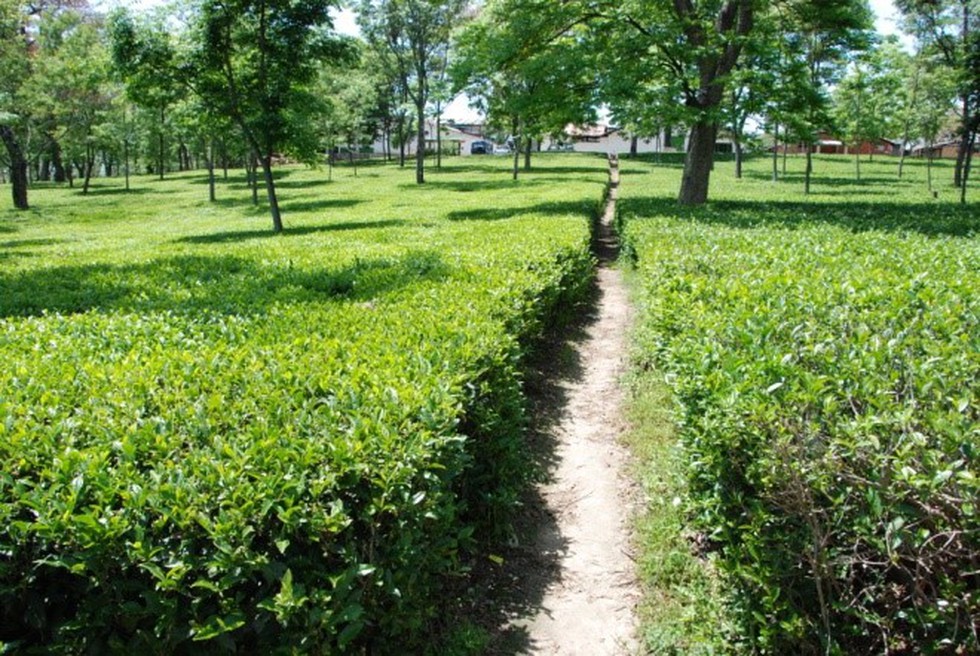
About Kangra Tea:
- It is a type of tea produced in the Kangra district of Himachal Pradesh.
- It is a high-quality tea that is known for its unique flavour, aroma, and colour.
- It is made from the leaves, buds, and tender stems of the Camellia sinensis species cultivated in the Kangra valley.
- Black tea and green tea have both been cultivated in the Kangra Valley.
- In India, Kangra tea received the Geographical Indication (GI) designation in 2005.
- Features:
- Kangra tea leaves are narrow and have a multi-stemmed frame.
- Green tea has a subtle woody aroma, while black tea has a sweet, lasting aftertaste.
- It has a light colour and a high body in liquor.
Prelims Pointers
March 30, 2023
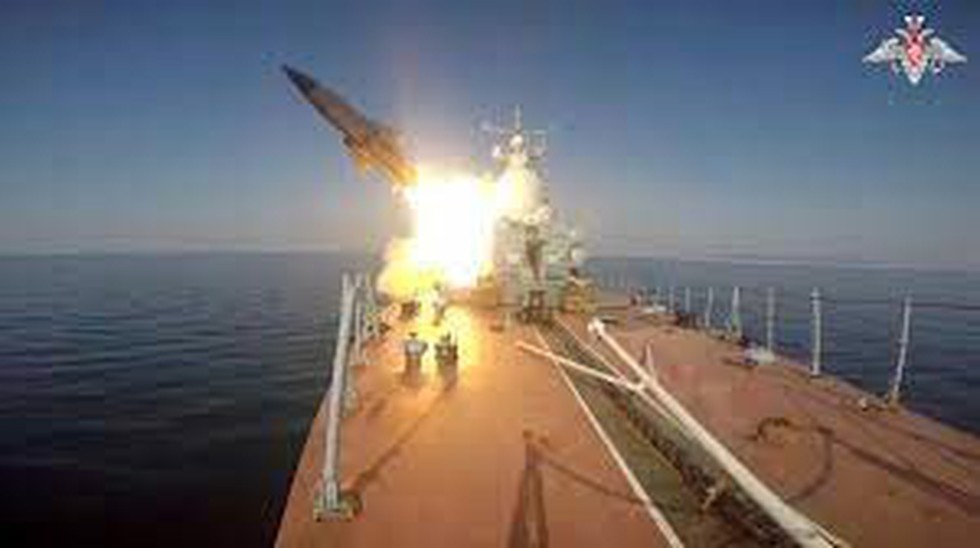
About Moskit cruise missiles:
- It is a supersonic anti-ship cruise missile that has conventional and nuclear warhead capacity
- It has the fastest flying speed among all anti-ship missiles in today's world.
- It reaches Mach 3 at a high altitude and its maximum low-altitude speed is M2.2.
- It is capable of destroying a ship within a range of up to 120 kilometres.
What are cruise missiles?
- A cruise missile either locates its target or has a preset target.
- It navigates using a guidance system such as inertial or beyond visual range satellite GPS guidance and comprises a payload and aircraft propulsion system.
- Cruise missiles can be launched from land, sea or air for land attacks and anti-shipping purposes, and can travel at subsonic, supersonic and hypersonic speeds.
- They stay relatively close to the surface of the earth, cannot be detected easily by anti-missile systems, and are designed to carry large payloads with high precision.
What are Ballistic Missiles?
- Ballistic Missiles are launched directly into the upper layers of the earth’s atmosphere.
- They travel outside the atmosphere, where the warhead detaches from the missile and falls towards a predetermined target.
- They are rocket-propelled self-guided weapons systems which can carry conventional or nuclear munitions. They can be launched from aircraft, ships and submarines, and land.
Prelims Pointers
March 30, 2023
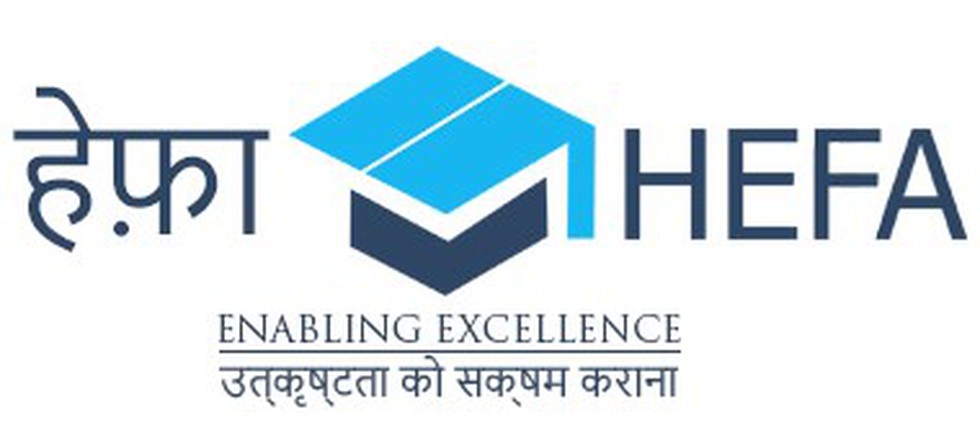
About Higher Education Financing Agency:
- Higher Education Financing Agency provides financial assistance for the creation of capital assets in premier educational institutions in India.
- It is registered under Section 8 as a Not-for-profit under the Companies Act 2013 as a Union Govt company and as Non–deposit-taking Systemically Important (NBFC-ND-SI) with RBI.
- It was established on 31st May 2017 and is a joint venture of the Ministry of Education, GoI and Canara Bank with agreed equity participation in the ratio of 90.91% and 09.09% respectively
- What are the objectives? The main aim of HEFA is for the development of India’s top-ranked institutions like IITs, IIITs, NITs, IISCs, and AIIMS into globally top-ranking institutions through improvement in their academic and infrastructure quality.
- It is particularly interested in financing the building of educational infrastructure, and R&D infrastructure and thereby enabling the institutions to reach top rankings globally.
Prelims Pointers
March 30, 2023

About National Company Law Appellate Tribunal (NCLAT):
- It was constituted under Section 410 of the Companies Act, 2013 for hearing appeals against the orders of the National Company Law Tribunal(s) (NCLT), with effect from 1st June 2016.
- Functions:
- Hearing appeals against the orders passed by NCLT(s) under Section 61 of the Insolvency and Bankruptcy Code, 2016 (IBC).
- To hear and dispose of appeals against any direction issued or decision made or order passed by the Competition Commission of India (CCI).
- It also hears and disposes of appeals against the orders of the National Financial Reporting Authority.
Key facts about the Competition Commission of India (CCI)
- The Competition Commission of India (CCI) was established in March 2009 by the Government of India under the Competition Act, 2002for the administration, implementation, and enforcement of the Act.
- It is a quasi-judicial body which gives opinions to statutory authorities and also deals with other cases.
- Composition of the CCI
- The Commission consists of one Chairperson and six Members who shall be appointed by the Central Government.
- The Chairperson and other Members shall be whole-time Members
- Objectives of this commission:
- It will eliminate practices having adverse effects on competition.
- To Promote and sustain competition.
- It helps in protecting the interests of consumers.
- Ensuring freedom of trade in the markets of India.
Prelims Pointers
March 30, 2023
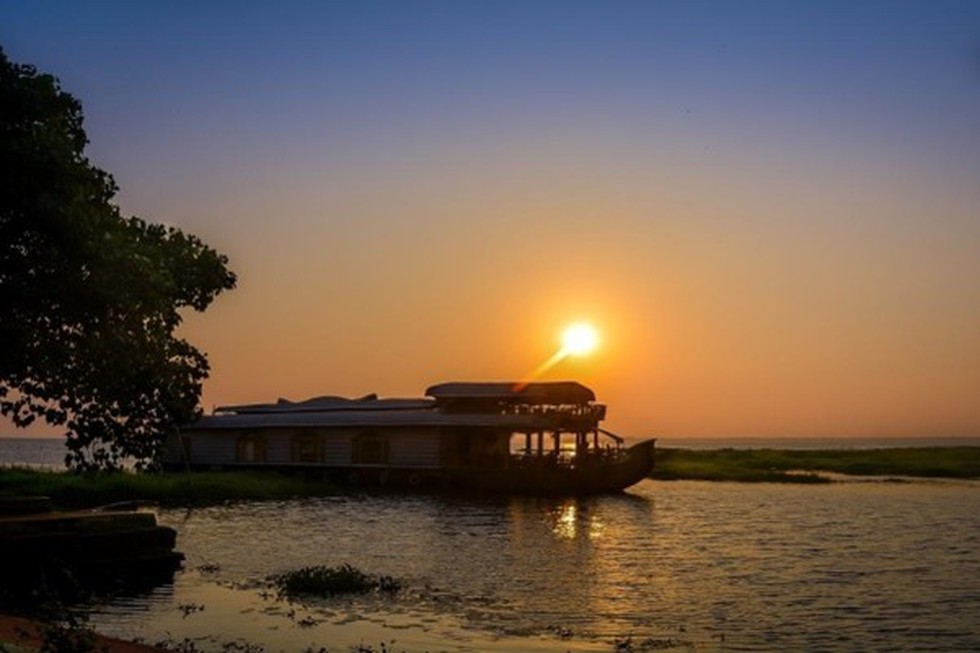
About Vemband Lake:
- Vemband is the largest lake in Kerala and the longest Lake in India.
- It is also known as Vembanad Kayal, Vembanad Kol, Punnamada Lake (in Kuttanad) and Kochi Lake (in Kochi).
- The lake has its source in four rivers, Meenachil, Achankovil, Pampa and Manimala.
- It is separated from the Arabian Sea by a narrow barrier island and is a popular backwater stretch in Kerala.
- Vallam Kali (i.e Nehru Trophy Boat Race) is a Snake Boat Race held every year in the month of August in Vembanad Lake.
- In 2002, it was included in the list of wetlands of international importance, as defined by the Ramsar Convention.
- The Government of India has identified the Vembanad wetland under the National Wetlands Conservation Programme.
- The Kumarakom Bird Sanctuary is located on the east coast of the lake.
Prelims Pointers
March 30, 2023
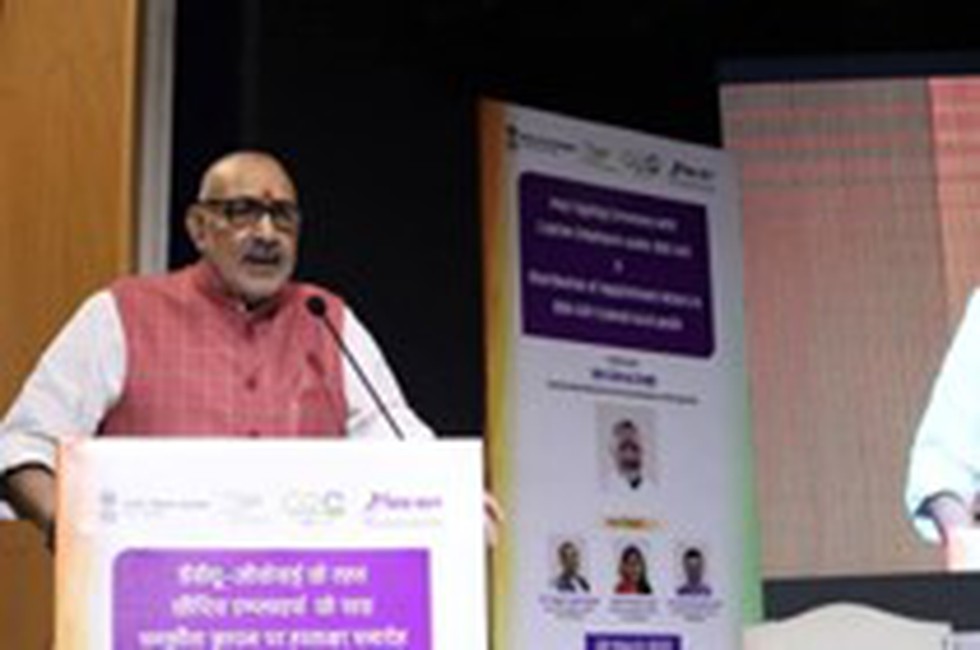
About Captive Employment initiative:
- Captive Employment is a first-of-its-kind initiative aimed at addressing the vision of a dynamic and demand-based skilling ecosystem catering to the requirements of industry partners assuring sustainable placements for rural poor youth.
- The Union Ministry of Rural Development (MoRD) signed an MoU with 19 Captive Employers.
- It aims to train and provide jobs for rural youth under the Deen Dayal Upadhyaya Grameen Kaushalya Yojana (DDU-GKY).
- The Captive Employment Guidelines ensure the RTD (Recruit, Train and Deploy) model.
- The RTD model addresses the needs of the industry, trains accordingly and ensures sustainable placements for rural youth.
- This initiative caters to the needs of industry partners, ensuring long-term employment for underprivileged rural youth.
- Captive Employers are the companies or industries that select rural youths, skill them, and deploy them in one of their establishments, sister concerns or subsidiaries.
- Captive Employers are required to
- Offer captive (in-house) placement to all the trained candidates.
- Provide captive employment to a minimum of 70% of trained candidates for 6 months.
- Captive employment gives a minimum salary of Rs 10,000 (for less than a 6-month course) and Rs 12,000 (for more than a 6-month course).
March 29, 2023
Prelims Pointers
March 29, 2023
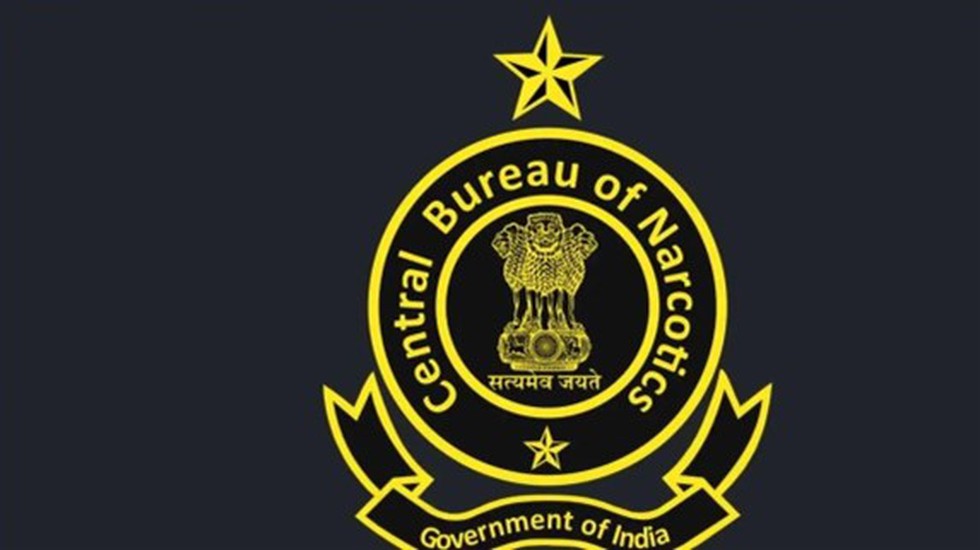
About Central Bureau of Narcotics (CBN):
- During the British East India Company Rule, collection of revenue from opium was made part of fiscal policy and various Opium Agencies such as the Bengal, Benaras, Bihar, and Malwa Agencies were formed over time.
- Before 1950, the administration of the Narcotics Laws, namely, the Opium Act of 1857 & 1878 and the Dangerous Drugs Act of 1930 vested with the Provincial Government.
- The amalgamation of these Agencies laid the foundation of the Opium Department in November 1950 which is presently known as the Central Bureau of Narcotics (CBN).
- All three enactments mentioned above were repealed by the Narcotics Drugs & Psychotropic Substances Act, of 1985 (NDPS Act, 1985).
- The headquarters of the Central Bureau of Narcotics was shifted from Shimla to Gwalior in 1960.
- Functions of the Central Bureau of Narcotics
- License farmers to cultivate opium poppy.
- Supervises and controls the cultivation.
- Procures the opium produced by licenced cultivators.
- Nodal Ministry: Under the Department of Revenue, Ministry of Finance
- India is a signatory to the UN Convention on Narcotic Drugs 1961, UN Convention on Psychotropic Substances 1971 & UN Convention against the Illicit Traffic in Narcotic Drugs and Psychotropic Substances, 1988 which obligates member countries to monitor the implementation of the United Nations drug control conventions.
- CBN interacts with the International Narcotics Control Board, Vienna and the Competent Authorities of other countries to verify the genuineness of the transaction before authorizing the shipments.
Prelims Pointers
March 29, 2023
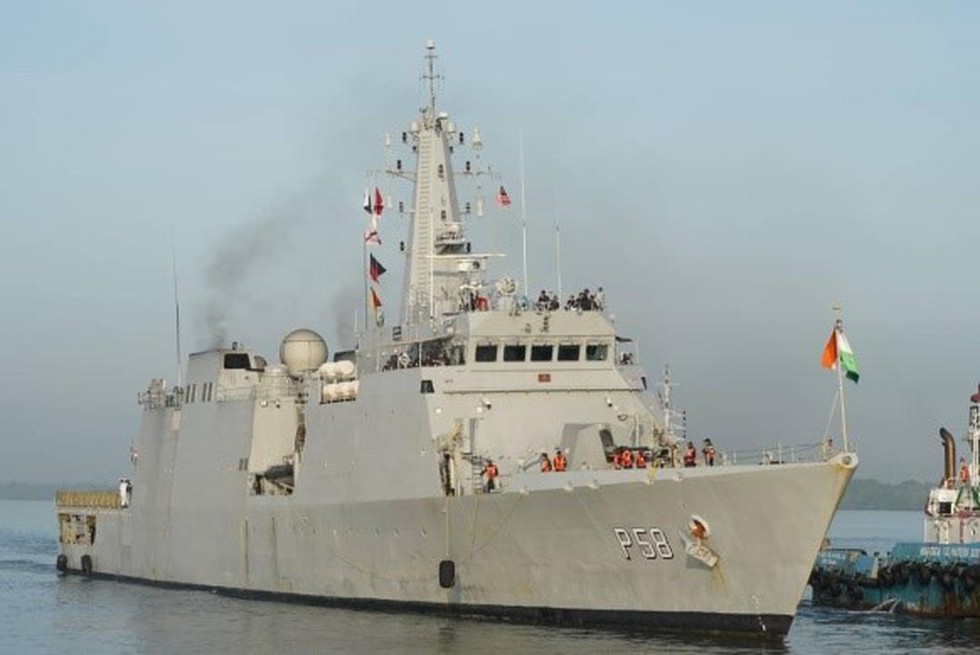
About INS SUMEDHA:
- INS Sumedha is an indigenously built Naval Offshore Patrol Vessel deployed for multiple roles independently and in support of Fleet Operations.
- It is part of the Indian Navy's Eastern Fleet based at Visakhapatnam and functions under the operational command of the Flag Officer Commanding-in-Chief, Eastern Naval Command.
- It is the third ship of the indigenousNaval Offshore Patrol Vessel (NOPV) Project to be inducted into the Indian Navy.
- The ship has been designed and built by Goa Shipyard Limited.
- The primary role of the ship is to undertake EEZ surveillance, anti-piracy patrols, fleet support operations, provide maritime security to offshore assets and carry out escort operations for high-value assets.
Prelims Pointers
March 29, 2023
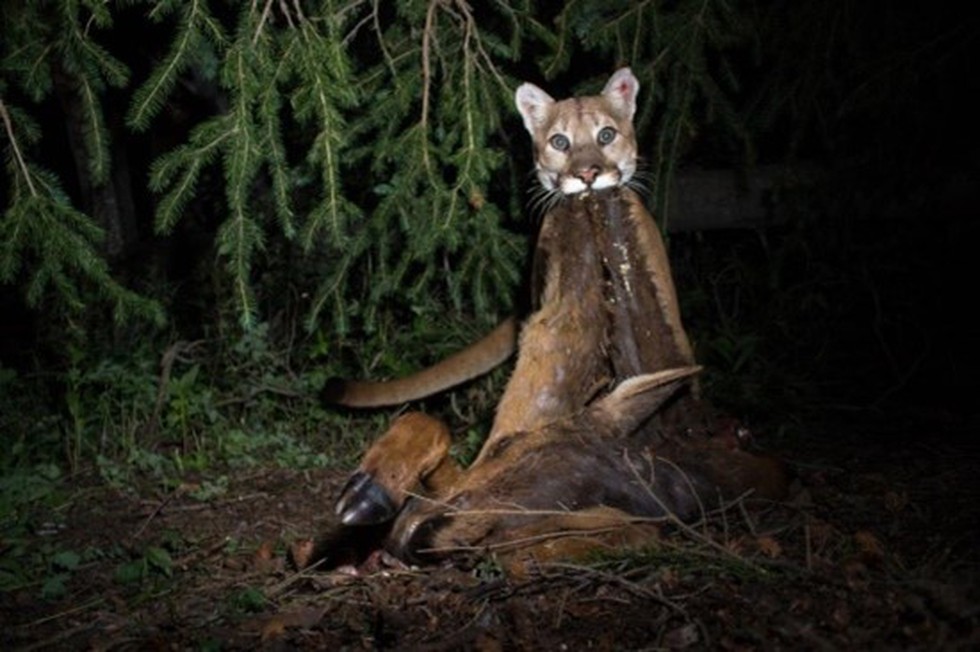
Why in news?
- A recent study revealed that Puma is using a garden-to-hunt strategy; meaning they fertilise the soil in their hunting spots with their kills to attract more prey.
- The animal carcasses of their prey are helping the animals create nutrient-rich hotspots that may continue to improve their future hunting success over time.
- These nutrients in the soil increase plant quality and attract ungulates — large mammals with hooves.
- Decomposing ungulate carcasses deposits elevated nitrogen, carbon and other valuable elements that improve soil and plants’ chemistry and nutrient makeup.
About Puma (Puma concolor):
- Puma is a member of the family Felidae and is also called mountain lion, cougar, or catamount (archaic).
- It is a large brownish New World cat comparable in size to the jaguar.
- Habitats: Pumas live in a variety of habitats, including desert scrub, chaparral, swamps, and forests but they avoid agricultural areas, flatlands, and other habitats lacking cover (vegetative or topographic).
- Puma has the widest distribution of any New World mammal, with a range extending from southeastern Alaska to southern Argentina and Chile.
- Conservation status
- IUCN: Least Concern
Prelims Pointers
March 29, 2023
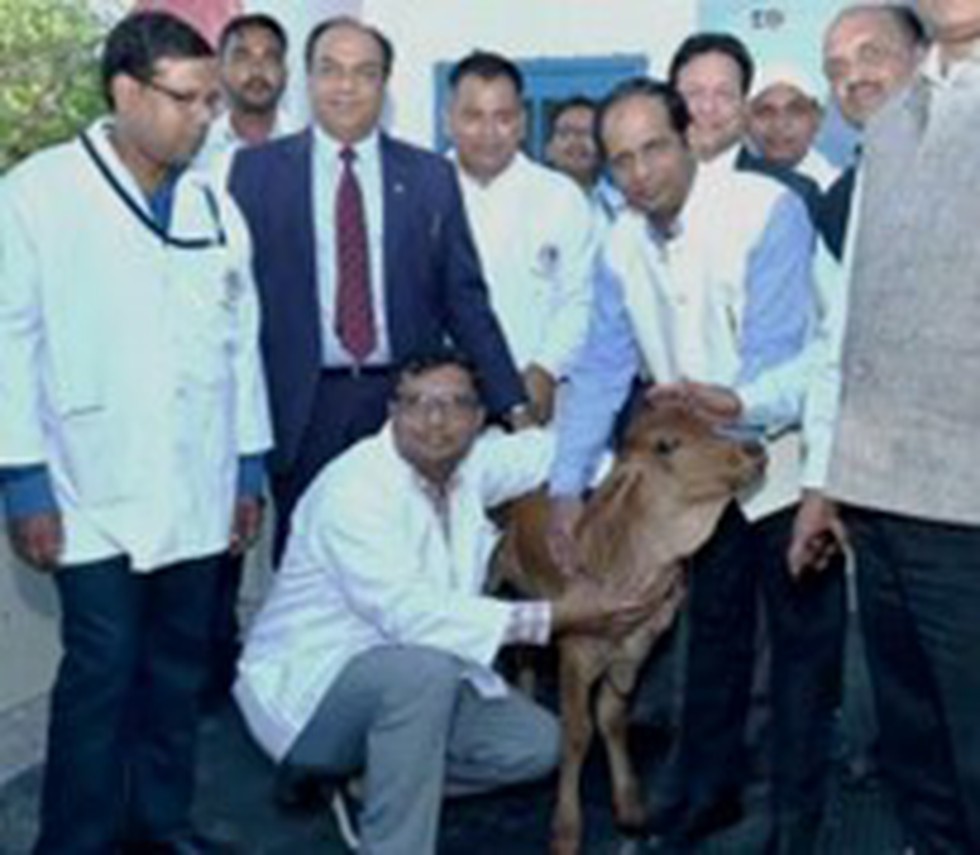
About Cloned Cow-calf:
- It is India's first cloned Gir female calf named Ganga.
- To clone the Gir, oocytes are isolated from live animals using ultrasound-guided needles, and then, matured for 24 hours under control conditions.
- The somatic cells of elite cows are used as donor genomes, which are fused with OPU-derived enucleated oocytes. Following chemical activation and in-vitro culture, the developed blastocysts are transferred into recipient mothers to deliver the Gir calf.
What is cloning?
- The term cloning describes a number of different processes that can be used to produce genetically identical copies of a biological entity.
- Cloning can be natural or artificial. Examples of cloning that occur naturally are as follows:
- Vegetative reproduction in plants, e.g. water hyacinth producing multiple copies of genetically identical plants through apomixis
- Binary fission in bacteria.
- Clones can also be produced through artificial means. Biotechnological methods are employed to produce such clones.
- Molecular cloning, where copies of specific gene fragments are produced
- Cellular cloning, where single-celled organisms with the exact genetic content of the original cell are produced in cell cultures.
- Organism cloning, or reproductive cloning, where a multicellular clone is created generally through somatic cell nuclear transfer
What are somatic cells?
- The word “somatic” is derived from the Greek word soma, meaning “body”. Hence, all body cells of an organism – apart from the sperm and egg cells, the cells from which they arise (gametocytes) and undifferentiated stem cells – are somatic cells
Prelims Pointers
March 29, 2023
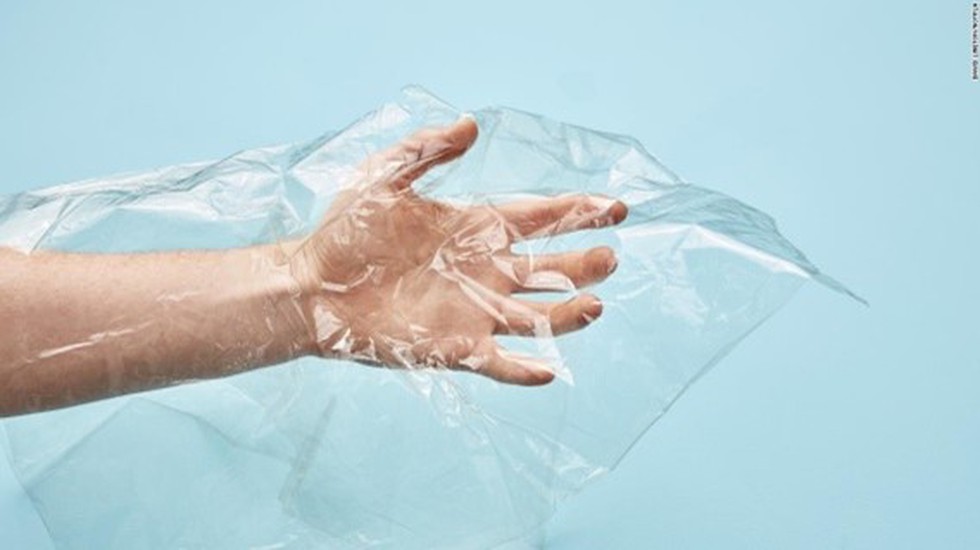
About Recyclable Plastic:
- The new recyclable plastic is based on Poly(ethyl cyanoacrylate) or PECA, which is prepared from the monomer used to make Super Glue.
- It is formed through a process of polymerization where single, repeating monomer units are strung together in a chemical reaction to make one long chain.
- It has comparable properties to existing plastics and is stable in hot, humid environments.
- The long polymer chains of the PECA plastic can be thermally 'cracked' at temperatures of 210 °C and the resulting monomers distilled into a clean product to use again.
What is Ethyl cyanoacrylate?
- Ethyl cyanoacrylate is a highly reactive monomer that has been used nearly exclusively to make Super Glue and related fast-setting adhesives
- It is produced on the ton scale from methanol, chloroacetic acid, and sodium cyanide, which themselves are sourced from hydrogen, nitrogen, methane, carbon monoxide, chlorine, and sodium hydroxide.
What is polymerization?
- It is a process in which relatively small molecules called monomers combine chemically to produce a very large chainlike or network molecule, called a polymer.
- The monomer molecules may be all alike, or they may represent two, three, or more different compounds.
Prelims Pointers
March 29, 2023

About TRAPPIST-1 b:
- It is a hot rocky exoplanet orbiting an ultracool red dwarf star TRAPPIST-1.
- It is the innermost of seven known planets in the TRAPPIST-1 system.
- It has 1.4 times the mass and 1.1 times the radius of Earth.
- It orbits its star at a distance of 0.011 astronomical unit (AU), completing one circuit in just 1.51 Earth days.
- It receives about four times the amount of energy that Earth gets from the Sun.
- TRAPPIST-1b is tidally locked, meaning that one side of the planet always faces the star, and one side looks away.
What is an astronomical unit (AU)?
- An AU is the average distance between Earth and the Sun, which is about 93 million miles or 150 million kilometres.
- It is usually used to measure distances within our Solar System.
Prelims Pointers
March 29, 2023
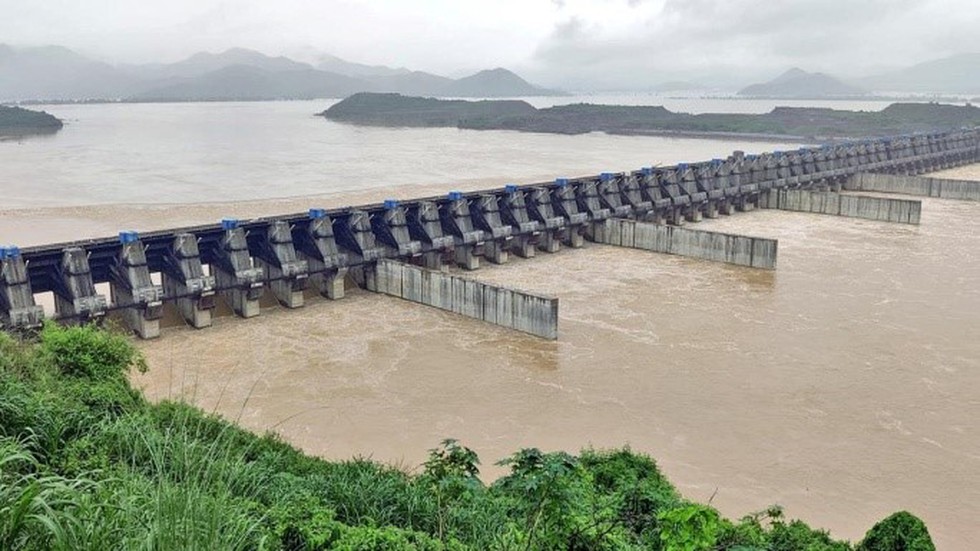
About Polavaram Irrigation Project:
- It is an under-construction multi-purpose irrigation project on the Godavari River in the Eluru District and East Godavari District in Andhra Pradesh.
- The project has been accorded National project status by the Union Government of India.
- Objectives:
- Development of Irrigation, Hydropower and drinking water facilities in East Godavari, Vishakhapatnam, West Godavari and Krishna districts of Andhra Pradesh.
- The project envisages the generation of 960 MW of hydropower, drinking water supply to a population of 28.50 lacks in 611 villages
- The ultimate irrigation potential of the project is 4.368 lakh ha.
- The project implements the Godavari-Krishna link under the Interlinking of rivers project. It envisages the transfer of 80TMC of surplus Godavari water to river Krishna which will be shared between Andhra Pradesh, Karnataka and Maharashtra.
Prelims Pointers
March 29, 2023
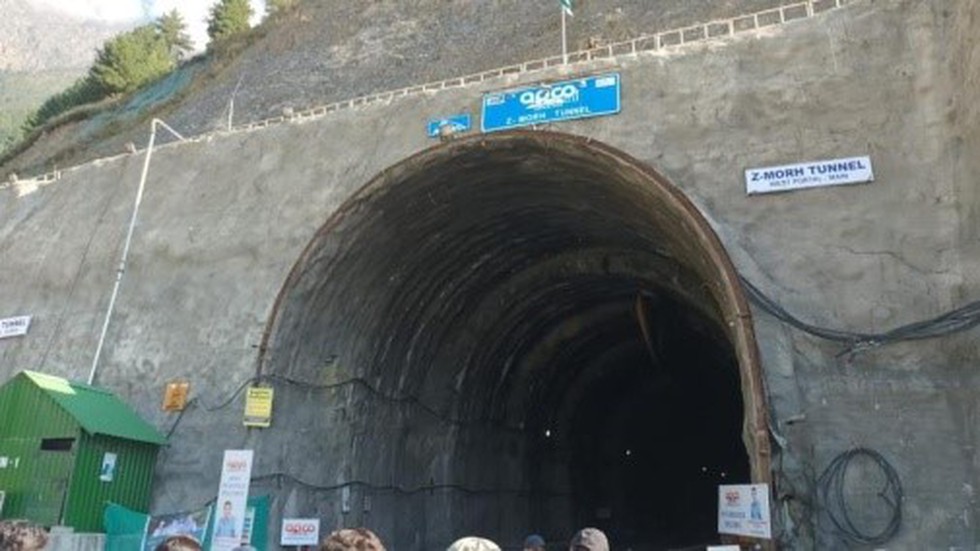
About Z-Morh Tunnel:
- It is an under-construction 2-lane road tunnel between Gagangir and Sonamarg on the Srinagar-Leh Highway in Jammu and Kashmir.
- It is named for the Z-shaped stretch of road between Sonamarg and Gagangir that the tunnel will replace.
- Length: 6.5 km
- Elevation: 8,960 feet.
- The tunnel is designed for the flow of 1,000 vehicles an hour at an approved maximum speed of 80 km per hour.
- Importance:
- At 8,960 feet, tourist destination Sonmarg is covered in snow during the winter season, forcing locals to shift to Srinagar. Z-Morh tunnel will ensure that Sonmarg town in Jammu & Kashmir remains connected as well as supplies are maintained all year round.
- It will ensure all-weather connectivity between Srinagar in Jammu and Kashmir and Kargil in Ladakh.
- Strategic Importance: Along with the 14.15 km Zojila Tunnel to its east, it aims to enhance the Indian military’s capabilities in Kashmir and Ladakh along both the Line of Control (LOC) to the north and the Line of Actual Control (LAC) further east.
Prelims Pointers
March 29, 2023
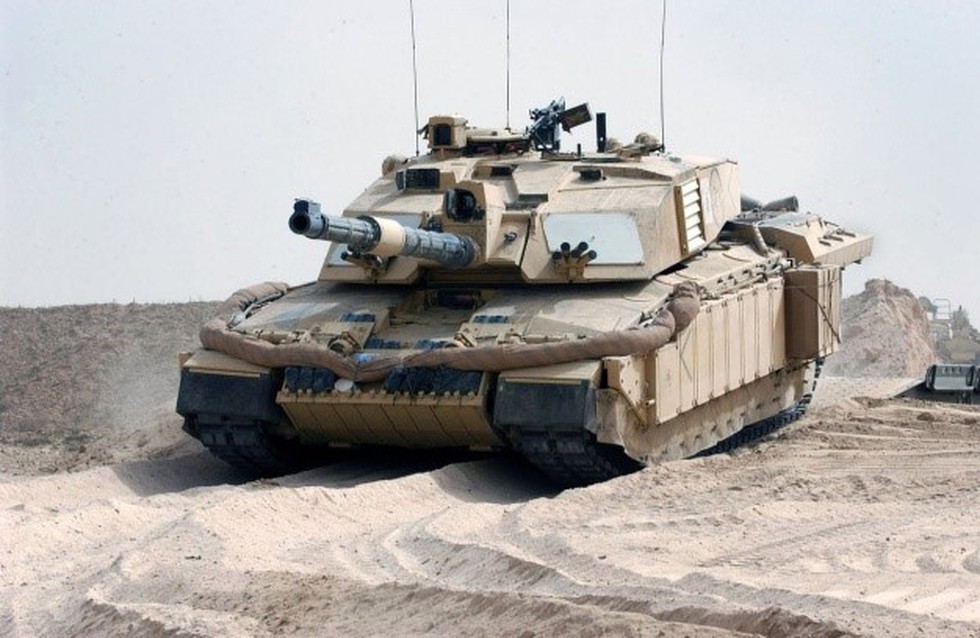
About Challenger 2 Main Battle Tank:
- It is the British Army’s main battle tank (MBT).
- It is a third-generation MBT, the same generation as the Russian T-80 and T-90 tanks.
- It is heavily armoured and highly mobile, designed for use in direct fire zones.
- Whilst its primary role is to destroy or neutralise armour, Challenger 2 can operate across a spectrum of high-intensity conflict, counter-insurgency and peacekeeping roles.
- Countries using: It is in service with the United Kingdom (386) and Oman (38).
- Features:
- The armour of the Challenger-2 is called the Chobham armour or the Dorchester armour and is considered among the best in the world.
- The tank is 27 feet long and eight feet tall.
- It has a range of 547 kilometres with a maximum speed of 59 kilometres per hour.
- It is armed with a rifled Royal Ordnance L30 120-mm main gun, which can deliver main armament rounds up to a range of around four kilometres.
- The secondary armament consists of two 7.62 mm machine guns.
Prelims Pointers
March 29, 2023
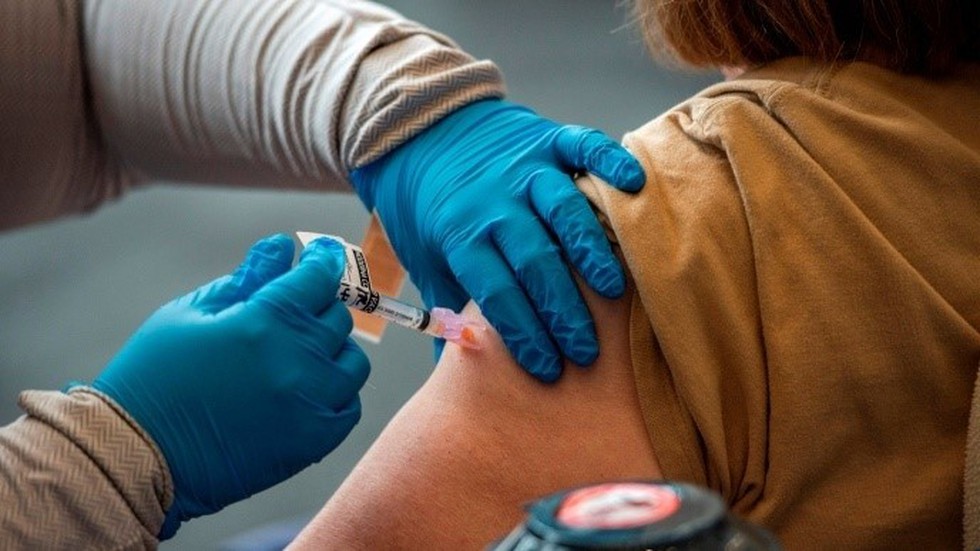
About Adjuvants:
- What is it? An adjuvant is a substance that is added to a vaccine to stimulate and enhance the magnitude and durability of the immune response.
- They are commonly used to improve the effectiveness of a vaccine.
- Adjuvants allow for lesser quantities of the vaccine and fewer doses.
- Generally, they are injected alongside an antigen to help the immune system generate antibodies that fight the antigen.
- Adjuvanted vaccines can cause more local reactions (such as redness, swelling, and pain at the injection site) and more systemic reactions (such as fever, chills and body aches) than non-adjuvanted vaccines.
- Example: Aluminum adjuvants are used in vaccines such as hepatitis A, hepatitis B, diphtheria-tetanus-containing vaccines etc.
March 28, 2023
Prelims Pointers
March 28, 2023
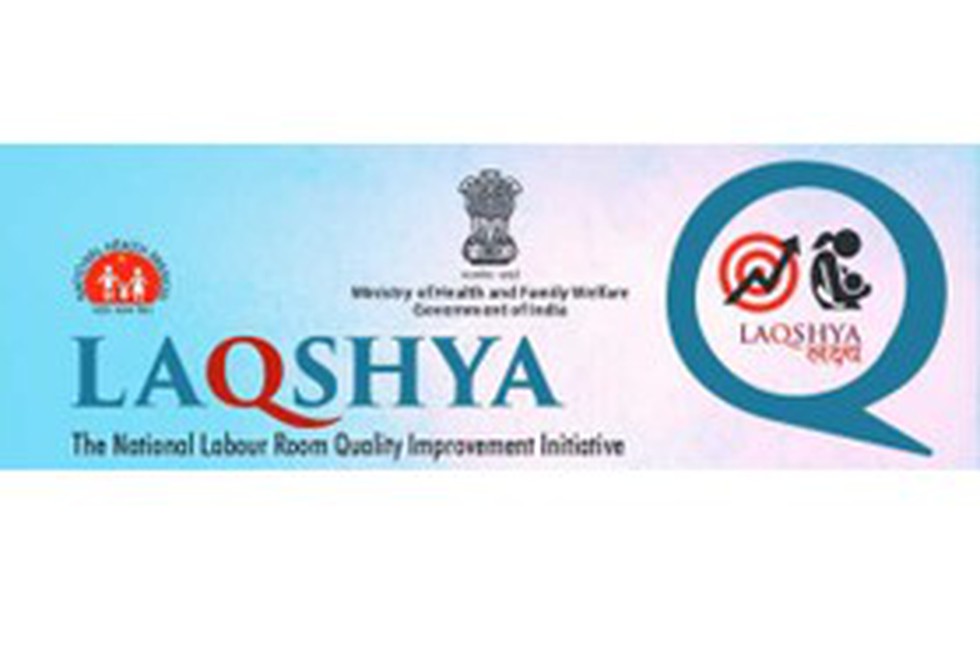
About LaQshya Programme:
- It aims to ensure Quality of Care during intrapartum and immediate post-partum periods in Labour Room and Maternity Operation Theatre.
- It covers all Government Medical College Hospitals, District Hospitals & equivalent health facilities, designated FRUs as well as high case load CHCs.
- Goal: To reduce preventable maternal and newborn mortality, morbidity and stillbirths associated with the care around delivery in the Labour room and Maternity OT and ensure respectful maternity care.
- Under the purview of LaQshya, one of the facility-level targets is to achieve a 5% or less Surgical Site Infection Rate in Maternity OT or at least a reduction of 30% from the baseline.
- At the time of LaQshya certification, compliance with the above-mentioned requirement is verified by the independent empanelled NQAS assessors.
- Nodal Ministry: Ministry of Health and Family Welfare
Prelims Pointers
March 28, 2023
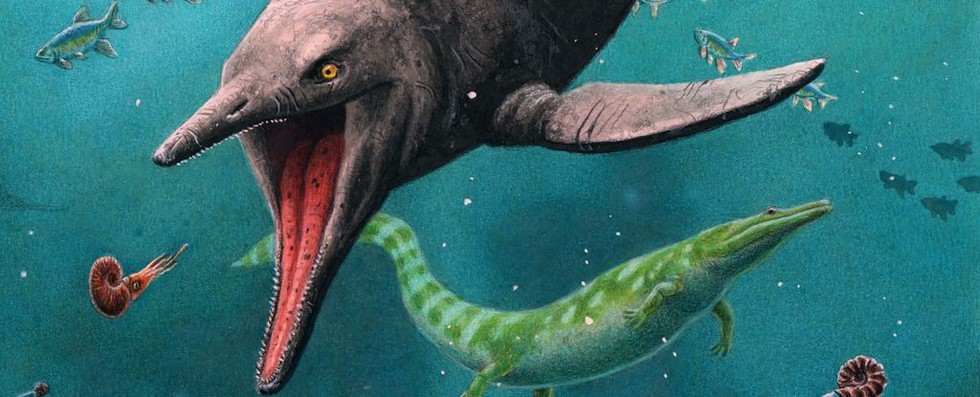
About Ichthyosaurs:
- Ichthyosaurs were a group of animals that strongly resembled modern dolphins.
- They evolved from land-dwelling creatures that returned to the sea in the Early Triassic, thriving until the late Cretaceous.
- A changing climate and slowness to adapt brought their time to an end around 95 million years ago.
- These reptiles quickly adapted to life in the water: their legs turned to fins, their snouts elongated and filled with fish-snatching teeth, and their bones became spongy like those of modern cetaceans.
- It was fully adapted to life as a marine reptile within 2 million years of the final days of the End-Permian Mass Extinction.
What is Permian Mass Extinction?
- It is also called the Permian-Triassic extinction, a series of extinction pulses that contributed to the greatest mass extinction in Earth’s history.
- Many geologists and palaeontologists contend that the Permian extinction occurred over the course of 15 million years during the latter part of the Permian Period (299 million to 252 million years ago).
- This event ranks first in the severity of the five major extinction episodes that span geologic time.
Key facts about Spitsbergen Island
- It is the largest island in the Svalbard archipelago,
- It is the only permanently inhabited part of Svalbard.
Prelims Pointers
March 28, 2023
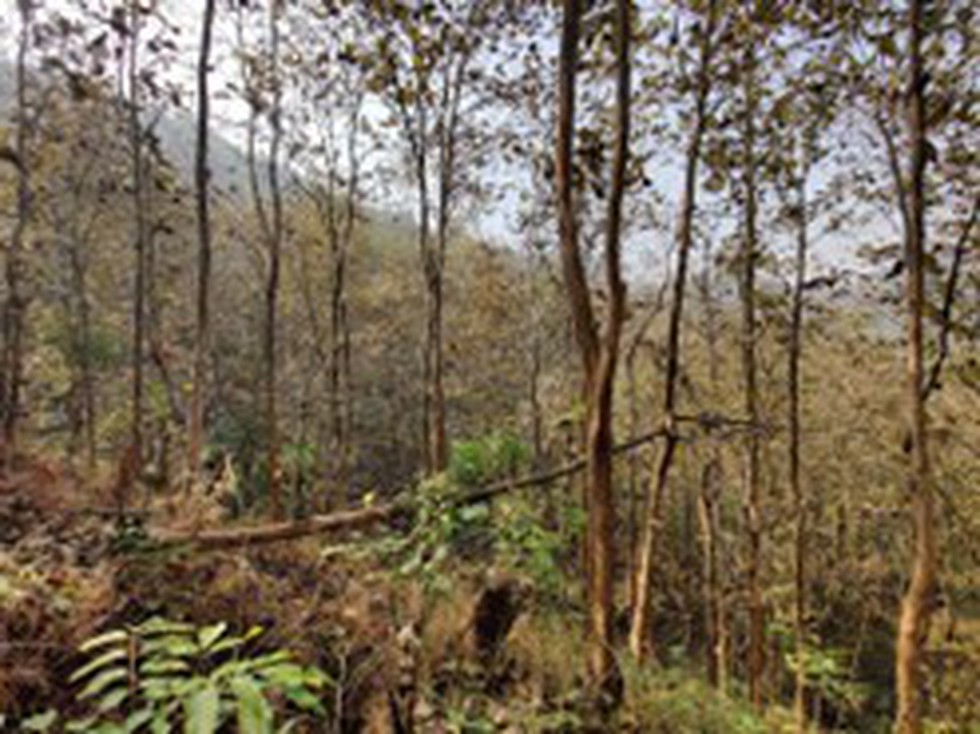
About Amchang Wildlife Sanctuary:
- The Amchang Wildlife sanctuary is located on the eastern fringe of Guwahati,
- It comprises three Reserve forests-Khanapara, Amchang, and South Amchang.
- It stretches from the Brahmaputra River in the north to the hilly forests of Meghalaya in the south, forming a continuous forest belt through Meghalaya's Maradakdola Reserve Forests.
- Flora: Khasi Hill Sal Forests, East Himalayan Mixed Deciduous Forest, Eastern Alluvial Secondary Semi-evergreen Forests and East Himalayan Sal Forests.
- Fauna: Flying fox, Slow loris, Assamese macaque, Rhesus macaque, Hoolock gibbon, Porcupine. White-backed Vulture, Slender-billed Vulture.
- Tree yellow butterflies (gancana harina) are found at the Amchang wildlife sanctuary which is indigenous to Thailand, Malaysia, Singapore and northeast India
Prelims Pointers
March 28, 2023
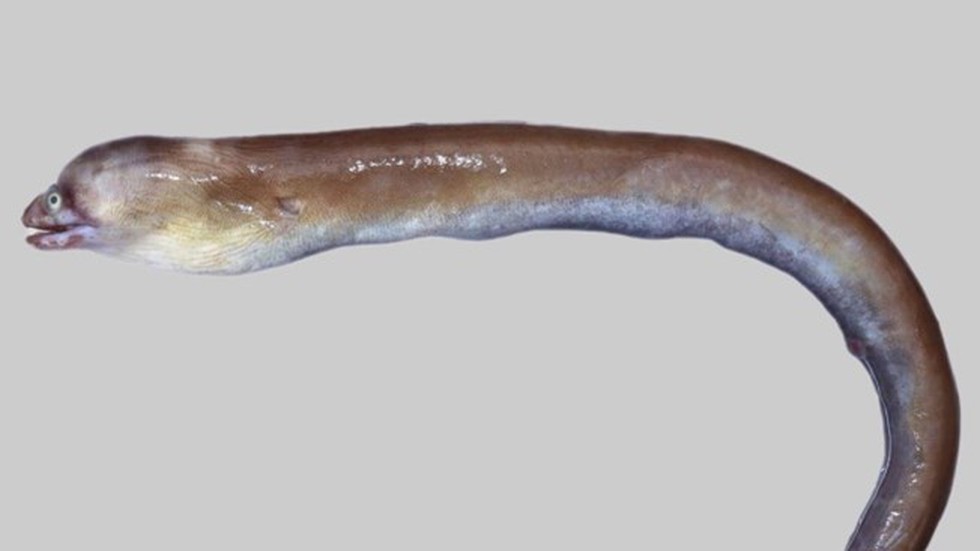
About Moray eel:
- Moray eels or Muraenidae are a family of eels found worldwide
- They have small eyes and rely primarily on their highly developed sense of smell to ambush prey. Their body is mostly patterned.
- Moray eels live in shallow water among reefs and rocks in all tropical and subtropical seas.
- Moray eels can be found in both freshwater and saltwater environments.
- They are distinguished by two types of jaws: regular (oral) jaws with large teeth and the pharyngeal jaw (which drags prey inside the eel's stomach).
- The newly discovered species has been named after Tamil Nadu as Gymnothorax tamilnaduensis with common name as Tamil Nadu brown moray.
Prelims Pointers
March 28, 2023
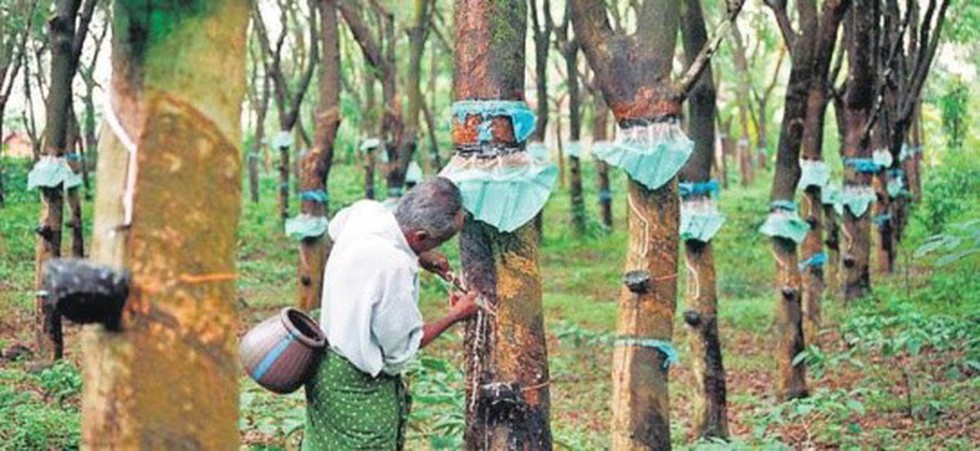
About CRISP App:
- The Comprehensive Rubber Information System Platform (CRISP) application has been developed by the Rubber Research Institute of India (RRII) in collaboration with the Digital University of Kerala.
- It gives information to rubber cultivators related to production and productivity enhancement, reduction of cultivation cost, maintenance of soil fertility, disease control measures, etc.
Key facts about Rubber Plantations in India
- Natural rubber is a polymer made up of a chemical molecule called isoprene.
- It is a native of the Amazon basin which was introduced to countries in the tropical belts of Asia and Africa in the late nineteenth century.
- Climatic conditions required for Rubber
- Rainfall: It requires moist and humid climates with heavy rainfall of more than 200 cm.
- Temperature: It grows well in equatorial climates and temperatures above 25 degrees Celsius.
- Soil: Well-drained, weathered soils.
- India is the world’s largest producer and the third-largest user of natural rubber.
- Rubber Growing Areas in India
- Traditional Areas: Primarily in Tamil Nadu’s Kanyakumari District and Kerala.
- Non-traditional regions: Coastal Karnataka, Goa, Maharashtra’s Konkan Region, coastal Andhra Pradesh and Orissa, the northeastern provinces, and the Andaman and Nicobar Islands, among other places.
Prelims Pointers
March 28, 2023

About Public Provident Fund (PPF) Scheme:
- The PPF Scheme is a very popular long-term savings scheme in India because of its combination of tax savings, returns, and safety.
- The PPF was first offered to the public in the year 1968 by the Finance Ministry’s National Savings Institute.
- Objective: To help individuals make small savings and provide returns on the savings.
- It is one of the safest investment products. i.e., the government of India guarantees your investments in the fund
- Tenure: 15 years (Can be renewed in blocks of 5 years).
- Interest rate: Interest rates currently payable on such accounts stand at 7.1%.
- Investment Amount: Minimum Rs.500, Maximum Rs.1.5 lakh p.a.
- Who is eligible for a PPF account? Any Indian citizen can open a PPF account.
- The PPF accounts cannot be held jointly, though you can make a nomination.
- Investment in PPF is tax-exempt under section 80C of the Income Tax Act (ITA), and the returns from PPF are also not taxable.
What is Sukanya Samriddhi Yojana?
- It was launched on 22 January 2015.
- Aim: Betterment of the girl child in the country by abolishing sex determination, gender discrimination, protection of girls, and higher participation of girls in education and other fields.
- Features of Sukanya Samriddhi Account:
- Minimum deposit ₹ 250/- Maximum deposit ₹ 1.5 Lakh in a financial year.
- Account can be opened in the name of a girl child till she attains the age of 10 years.
- Only one account can be opened in the name of a girl child.
- The account can be opened in Post offices and in authorised banks.
- Withdrawal shall be allowed for the purpose of higher education of the Account holder to meet education expenses.
- The account can be prematurely closed in case of marriage of girl child after her attaining the age of 18 years.
- The account can be transferred anywhere in India from one Post office/Bank to another.
- The account shall mature on completion of a period of 21 years from the date of opening of the account.
- Deposit qualifies for deduction under Sec.80-C of I.T.Act.
- Interest earned in the account is free from Income Tax under Section -10 of I.T.Act.
Prelims Pointers
March 28, 2023
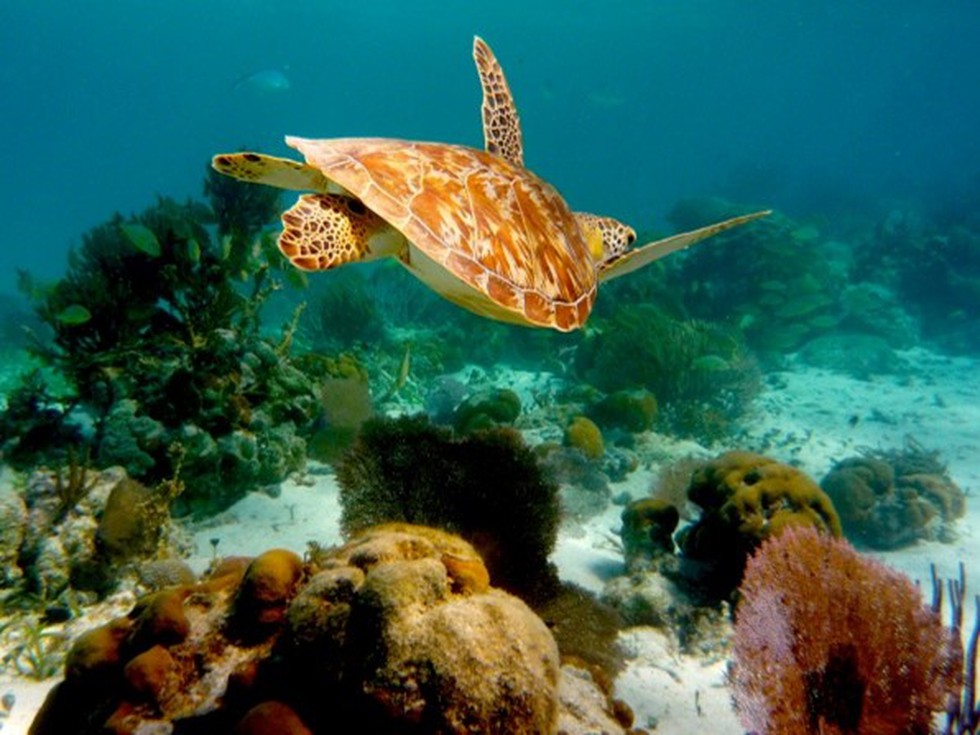
About Marine Protected Areas (MPAs):
- MPAs are areas of the ocean set aside for long-term conservation aims.
- They support climate change adaptation and mitigation while providing other ecosystem services.
- The specific purposes, legal authority, level of protection, management approaches, and use allowance of individual marine protected areas (MPAs) can vary greatly from site to site
- Many MPAs allow people to use the area in ways that do not damage the environment. Some ban fishing. A few do not allow people to enter the area at all.
- MPAs currently cover about 6.35% of the ocean. However, only just over 1.89% of that area is covered by exclusively no-take MPAs that do not allow any fishing, mining, drilling, or other extractive activities.
What is the United Nations High Seas Treaty?
- It is the first-ever treaty to protect the world's oceans that lie outside national boundaries.
- It is also known as the ‘Paris Agreement for the Ocean.’
- It is a legally binding treaty to protect marine life in international waters.
- It aims to place 30% of the seas into protected areas by 2030 (a pledge made by countries at the UN biodiversity conference in 2022).
- It will provide a legal framework for establishing vast marine protected areas (MPAs) to protect against the loss of wildlife and share out the genetic resources of the high seas.
Prelims Pointers
March 28, 2023

About Audi Alteram Partem:
- The literal meaning of Audi Alteram Partem is to “hear the other side”.
- It denotes that every party shall get an opportunity of hearing and no one shall go unheard in a case.
- Under this doctrine, every party shall get an opportunity to plead and assert evidence to support his case.
- This ensures a fair hearing and fair justice to both the parties.
- No decision can be declared without hearing both the parties. The aim of this principle is to give an opportunity to both the parties to defend themselves.
- The doctrine is the basic concept of the principle of natural justice.
- The following are the key components of this doctrine:
- Notice:
- Before any action is taken, the affected party must be given a notice to show cause against the proposed action and seek his explanation.
- A notice must contain the time, place and date of hearing, jurisdiction under which the case is filed, the charges, and proposed action against the person.
- Any order passed without giving notice is against the principles of natural justice and is void.
- Hearing:
- The order passed by the authority without providing the reasonable opportunity of being heard to the person affected by it adversely will be invalid and must be set aside.
- Evidence:
- It is an important part which is to be brought properly before the Court in the presence of both the parties and a judicial or quasi judicial authority must have to act on the evidence produced as in the case.
- Cross-Examination:
- Every person has the right to contest or object to the evidence presented by the other party.
- Legal Representation:
- Every person is not able to present his case assertively. Thus, he needs some assistance from a specialised legal attorney to present his case.
- The Indian Constitution also provides that every person has a right to get legal assistance.
- Exceptions to the doctrine of Audi Alteram Partem:
- The word exception doesn’t mean the principles of natural justice and fair play will not be there.
- These exceptions only denote those conditions in which nothing unfair will occur, even if certain conditions of this maxim are relaxed.
- Some conditions for exceptions are:
- Emergency;
- Confidentiality;
- Impractibility;
- Statutory Exclusion;
- Legislative Function
Prelims Pointers
March 28, 2023
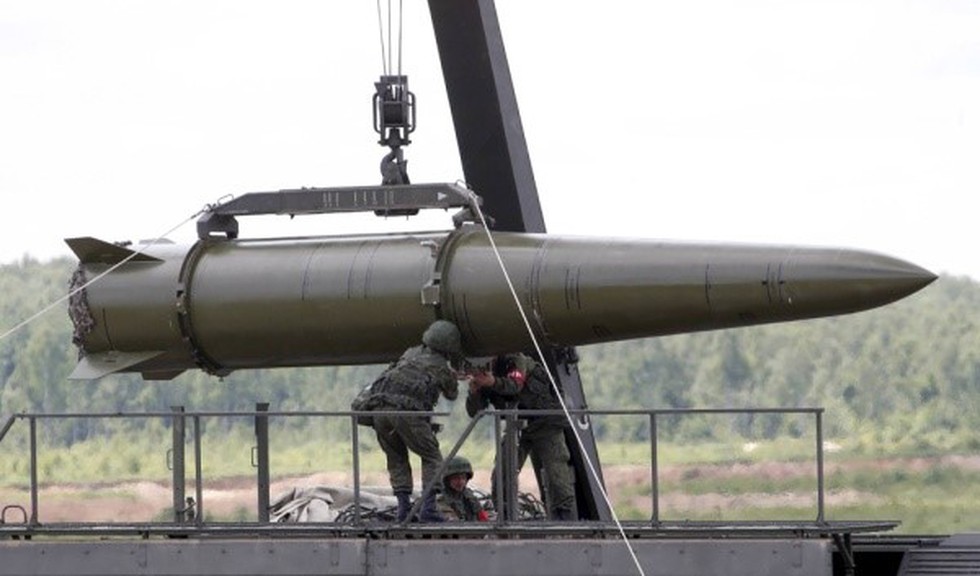
About Tactical Nuclear Weapons:
- Nuclear weapons, just like other weapons, can be categorised into two types — strategic and tactical.
- Strategic Nuclear Weapons: They refer to nuclear weapons that have bigger objectives, such as destroying cities or larger targets, with larger war-waging objectives in mind.
- Tactical Nuclear Weapons (TNWs):
- They are nuclear weapons used for specific tactical gains on the battlefield.
- They are intended to devastate enemy targets in a specific area without causing widespread destruction and radioactive fallout.
- These are designed for use in battle as part of an attack with conventional weapon forces.
- These warheads can be delivered via a variety of missiles, torpedoes and gravity bombs from naval, air or ground forces. They could even be simply driven into an area and detonated.
- The explosive yield of tactical nuclear weapons can range from under one kiloton to about 100 kilotons, whereas strategic nuclear weapons can have a yield of up to one thousand kilotons.
- Delivery systems for tactical nuclear weapons also tend to have shorter ranges, typically under 310 miles (500 kilometres), compared with strategic nuclear weapons, which are typically designed to cross continents.
- They are the least-regulated category of nuclear weapons covered in arms control agreements.
- Countries possessing TNWs:
- Nine countries have tactical nuclear weapons, according to the Federation of American Scientists.
- They are Russia, the United States, China, France, the United Kingdom, Pakistan, India, Israel and North Korea.
- Russia has a stockpile of an estimated 2,000 tactical nuclear missiles.
- The U.S. has an estimated 200 tactical nuclear bombs, half of which are at bases in Europe.
Prelims Pointers
March 28, 2023

About Index Provider:
- Index providers are those institutions that formulate and manage indices.
- One of the important roles of the index provider is to classify and define markets, as their indices represent a market or a proportion of a market and provide a benchmark of performance for that market or sector.
- They have the responsibility to set the rules that decide what securities to include in each index, how the index will be managed and how securities will be added or removed from that index over time.
- They also usually determine how stocks can be classified, e.g. is a particular stock a Healthcare or an Oil & Gas stock, or is it a Developed or Emerging market stock.
- An index allows investors and other stakeholders to get a snapshot of the market.
- S&P Dow Jones, MSCI, and Bloomberg are some of the globally renowned institutions that provide indices.
- In India, this activity is generally carried out by subsidiaries of stock exchanges. The most prominent indices in India are the Nifty50 by NSE Indices and Sensex provided by a venture of S&P Dow Jones Indices and BSE Lied.

